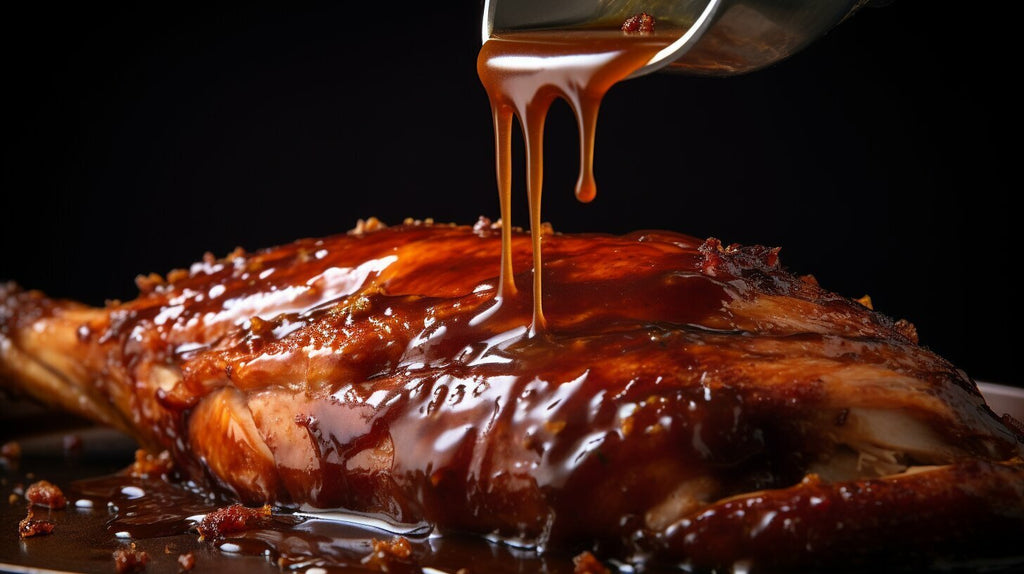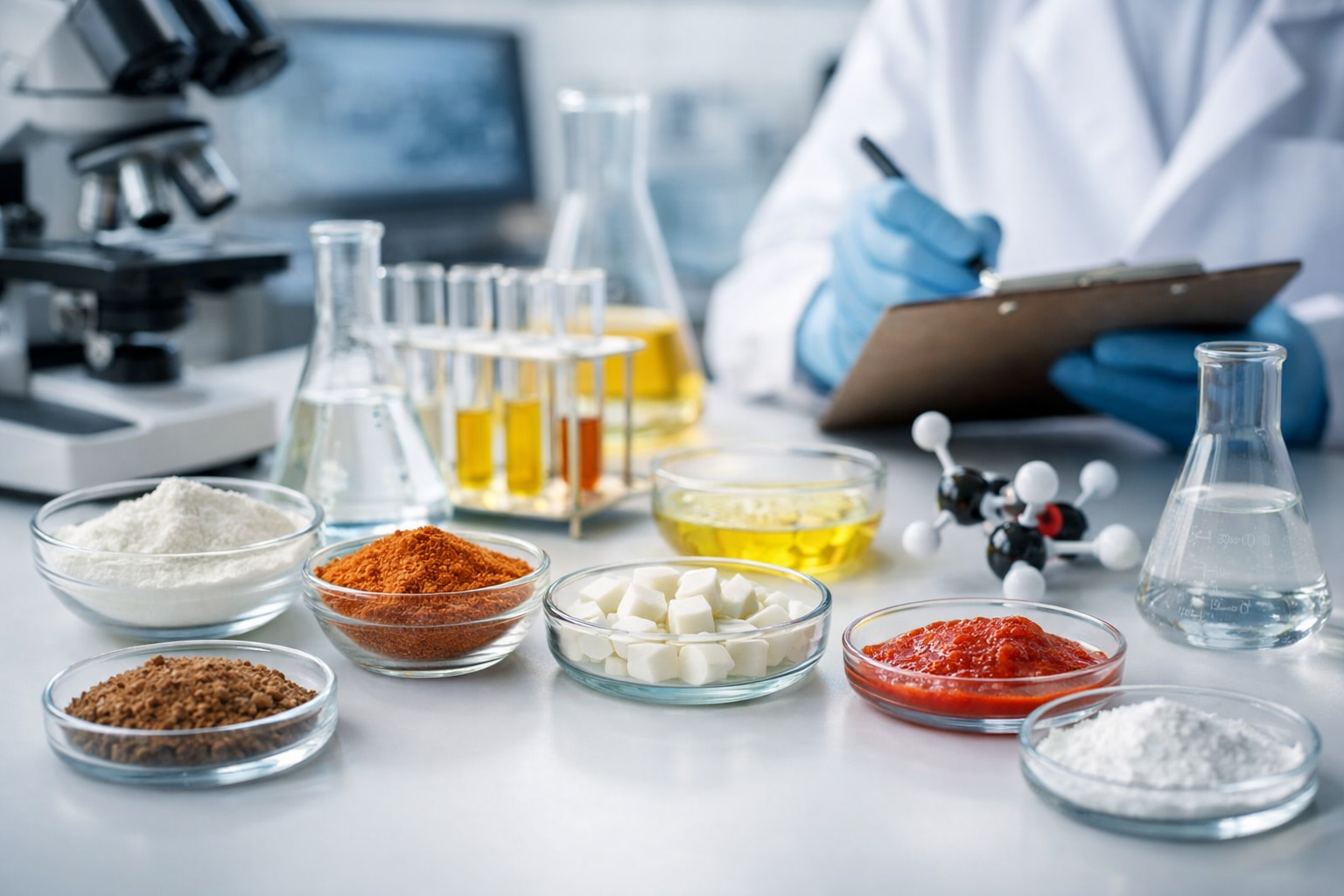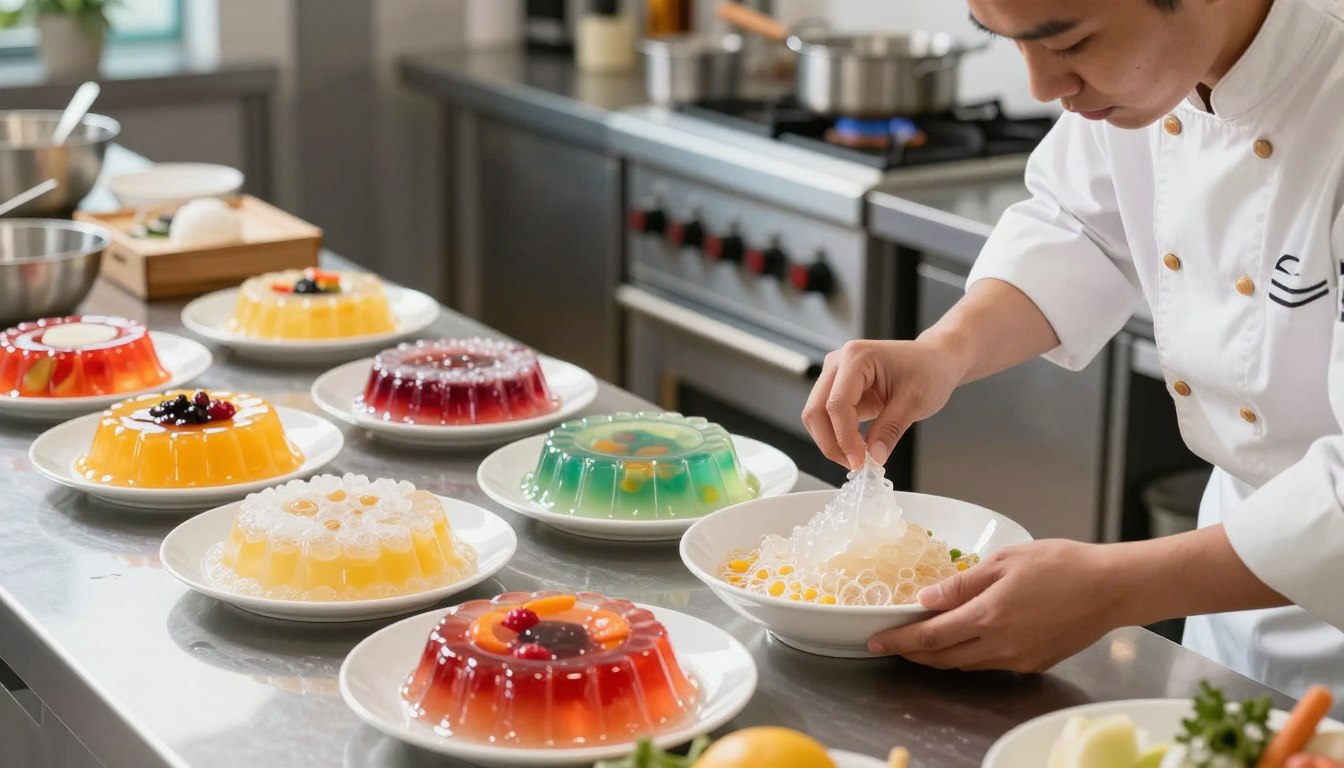
Harnessing the Power of Emulsifiers: Creating Creamy, Stable Sauces
SUBSCRIBE TO OUR BLOG
Promotions, new products, and recipes.
Can oil and water mix?
Conventional wisdom says no, but with emulsifiers, they can mix. That's the magic of emulsifiers. Turns out these emulsifiers are what bring some of the most creamy and stable sauces to life.
We do not blame you if you have never heard of them. Today's post will look into these food additives and help you understand what they do.
What are emulsifiers?
According to the FDA, these substances change the surface tension of ingredients to help them mix.
Wait, what?
In simple terms, they are food additives that can mix 2 ingredients (even oil and water). That is possible because these consist of hydrophilic (Dissolvable in water) and hydrophobic (water repelling) components.
How do emulsifiers work?
In the presence of both hydrophobic and hydrophilic components, the mixing of ingredients has a stabilizing effect on the entire mixture. The hydrophobic components are attracted to oil or fat. In contrast, hydrophilic components are attracted to water, thus creating an interface between them, allowing them to mix rather than form a boundary, like in the case of water and oil.
Types of emulsifiers
Emulsifiers can be broadly divided into two types which are:
Natural emulsifiers
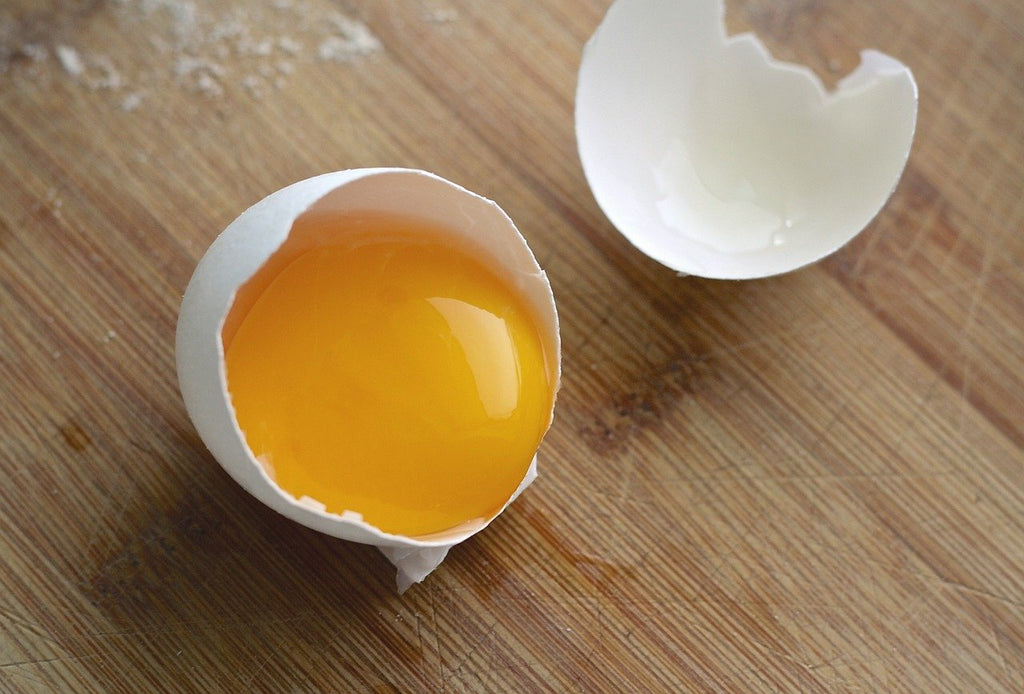
Egg yolks are a natural emulsifier.
True to their name, such emulsifiers occur naturally. Examples include:
- Egg yolks:
Proteins in eggs have amino acids, some repel water, whereas others attract water, making it the perfect emulsifier.
- Soy Lecithin
Soy Lecithin is derived from animal or plant tissue. It works as a stabilizing and mixing ingredient. It helps retain the flavors of the ingredients and, therefore, works as a flavor protector.
- Gum Arabic:
Gum Arabic is dried sap that comes from branches and stems of Acacia trees. It is well known for mixing liquids over a wide temperature and pH level.
Artificial emulsifiers
While these were the most common natural emulsifiers, now is the time to look at some artificial ones.
- Polysorbate 80 (P80)
P80 is a surfactant that increases the solubility of at least one ingredient in the mix. It results in extremely stable solutions, and that is why it is used not just in food but also in vaccinations and medicines.
- Polyglycerols
Polyglycerols primarily consist of fatty acids and glycerol, both having hydrophobic and hydrophilic components, which makes them excellent emulsifier.
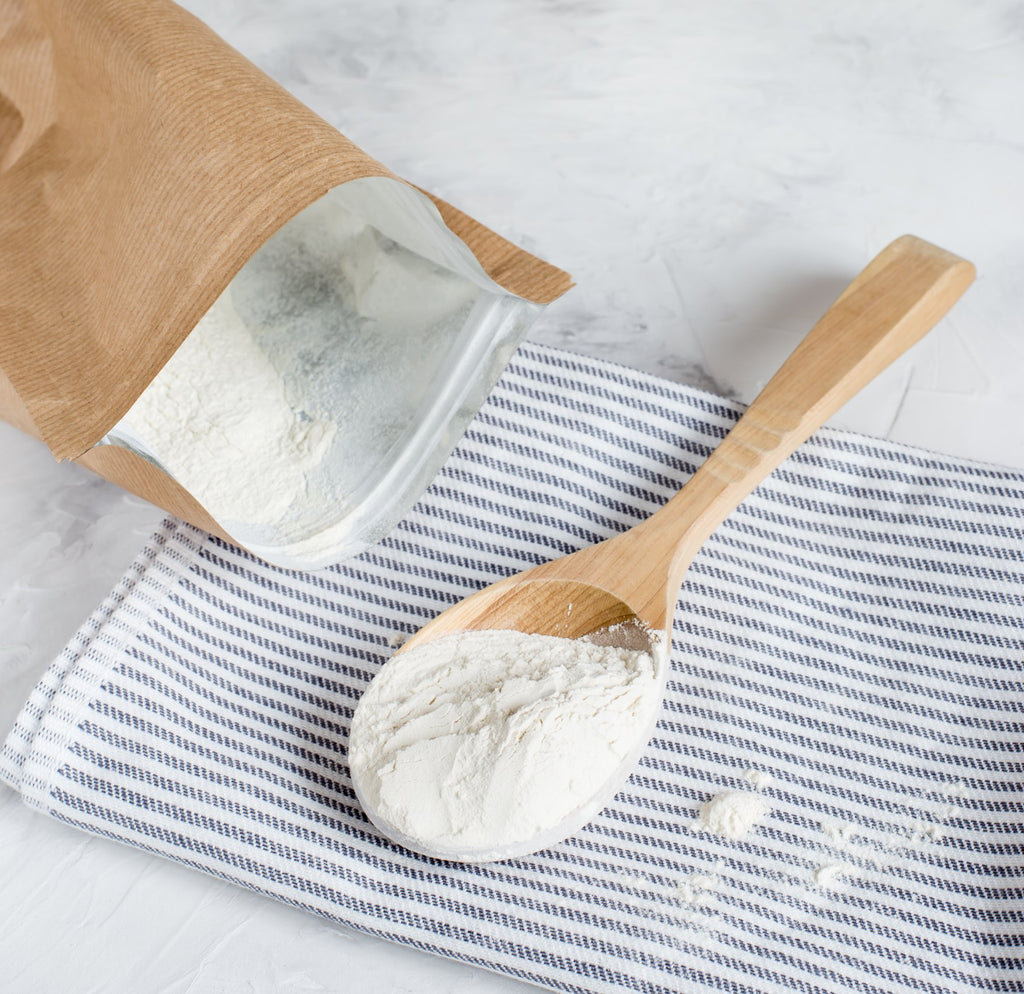
- Xanthan gum
Xanthan gum is manufactured by fermenting a carbohydrate with bacteria. Adding it to the mix changes its viscosity, which prevents the mixture from forming lumps or separating.
Common emulsifiers & their E-numbers
When you go through the ingredient list of any foodstuffs, seldom will you find the names of these ingredients. Most are mentioned by their E numbers (also known as Europe numbers). Below is a list of dietary emulsifiers and their E numbers to better identify them.
|
Emulsifier |
E Number |
Usual Application |
|
Lecithin |
E322 |
Chocolates |
|
Carrageenan |
E407 |
Milk & dairy based products |
|
Guar gum |
E412 |
Dairy & soy based products, Desserts |
|
Xanthan gum |
E415 |
Mayonnaise, sauces, salad dressings |
|
Polysorbates |
E432-436 |
Bakery products and desserts |
|
Polyglycerol polyricinoleate |
E476 |
Margarine, Dairy products, Chocolate |
Applications of emulsifiers
Now for the fun part, where are these emulsifiers used? Let's take a look below.
A sauce thickened with agar agar, a hydrocolloid.
Sauces:
That's the #1 application of emulsifiers.
Imagine mayonnaise without the fat or oil content. It would lose its creamy texture. Without an emulsifier, it would be a mess of water and fat (oil) separated from one another. Add emulsifiers like an egg yolk to get that delicious creamy texture.
Besides mayonnaise, most other creamy sauces use emulsifiers like:
- Hollandaise
- Bearnaise
- Ketchup (most of them)
- Mustard sauce
- & so on
If you do not believe us, simply look at the ingredient list, and you will find emulsifiers on that list.
Bread
How do you get the soft, fluffy bread?
The answer lies in emulsifiers. Particularly dough strengthening emulsifiers like E472e, E481, E482 among others. These emulsifiers aim to increase the volume of dough, provide proper crumbly structure, and increase the bread's shelf life.
Chocolate using lecithin as an emulsifier.
Chocolate
What would chocolate be without the right consistency and texture?
Both these are attained by adding emulsifiers. Most emulsifiers can perform exceedingly well over a large temperature range, making them perfect for chocolates.
Ice cream
Ice cream is a mix of air, fat, and various other ingredients. It's not easy to blend all of these together to create the right texture; this is where emulsifiers come into the picture. Often, lecithin is used not just for ice creams but also in other desserts like milkshakes, frozen yogurts, and so on.
Margarine
Margarine consists of water, oil, and fat. Emulsifiers are, therefore, required to bring all of them together.
Creamers
Most creamers like Half and Half contain sugar, water, and vegetable oil. Wherever you find oil and water intertwined together, chances are, emulsifiers are used to bring them together, and the same is the case with creamers.
Breakfast cereals
We hear you say, Why do breakfast cereals contain emulsifiers on earth?
The answer lies in the fat and sugar mix present in most cereals. Usually, sunflower lecithin is used to bind them together. Besides the food industry, the pharma industry and the cosmetic industry also use emulsifiers widely.
Emulsifiers benefits
So, you now know what emulsifiers are, their applications, and what they do, but do they have any other benefits? You bet!
Check the benefits below to understand why they are so widely used.
Increases volume
Emulsifiers help mixtures retain ingredients. However, what many people don't know is that it includes gas retention. Any food mixture that retains more gas will certainly have more volume (For example: bread).
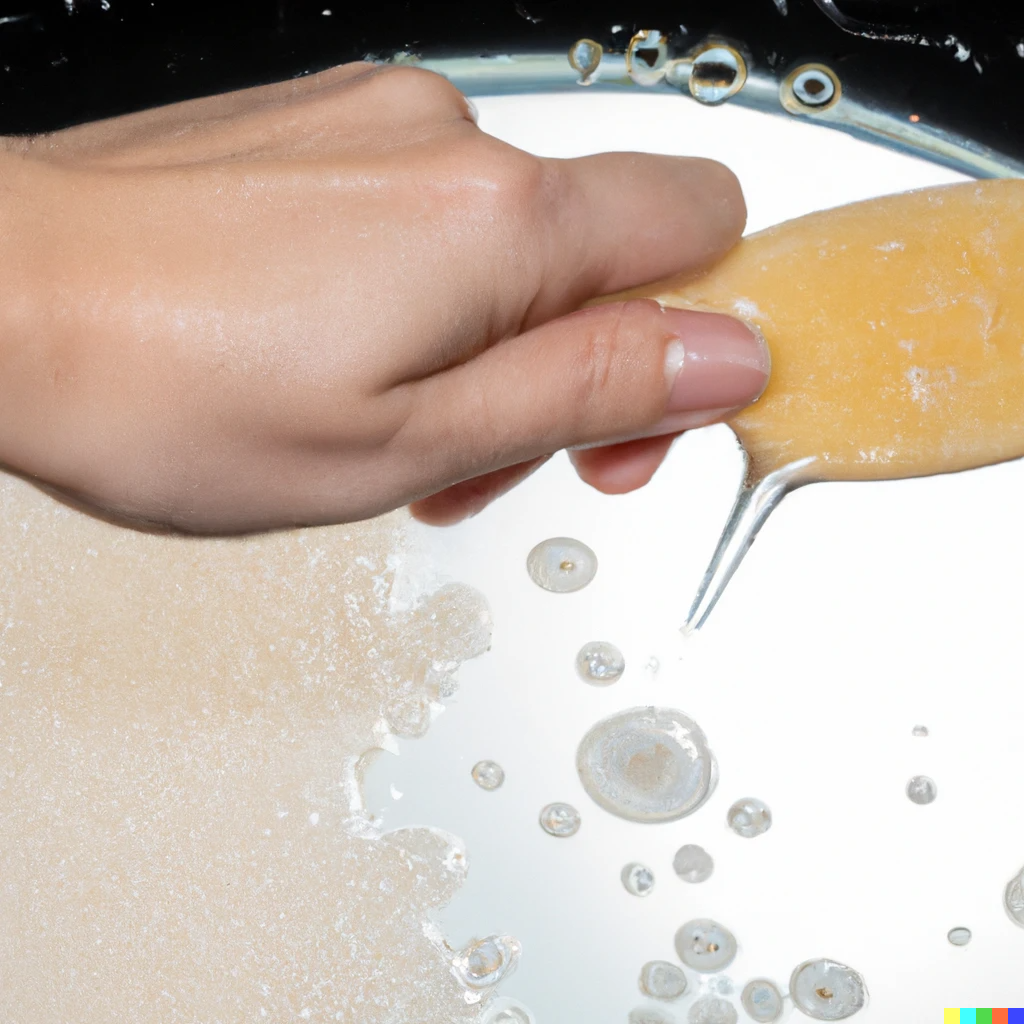
Adding an emulsifier to improve the texture of food.
Better food texture
Add oil and fat to any food in proper proportions, and you can control their texture pretty well. That's what emulsifiers do as well. Moreover, emulsifiers stabilize the entire mixture, ensuring the texture will also be uniform.
Higher shelf lives
According to the book "Food Emulsifiers and Their Applications," Emulsifiers provide predictable rheological properties (ways in which those substances deform) to ingredients. With controlled deformation and the right formulation, the shelf life of those packaged foodstuffs can be increased.
Increased nutrition absorption
Emulsifiers like lecithin in the proper quantity can aid the absorption of various vitamins like A, D, E, and K since they are fat soluble.
Preventing overcooking
Emulsifiers condition the dough or processed foods to which they are added, which leads to even moisture distribution. Consequently, the probability of the food being overcooked reduces.
Summary
Emulsifiers, when used right, can help you control various properties of food, like texture, flavor, shelf life, and more. However, it's necessary to know how emulsifiers work and how to use them to your advantage. Simply keep in mind the information above, and you shouldn't have a problem in using emulsifiers.
With awareness about emulsifiers increasing, they are only going to become more popular in the future.
FAQ
What is the role of an emulsifier in milk?
An emulsifier in milk binds the protein together and stabilizes the milk, increasing milk and milk product's shelf life.
Is an emulsifier vegetarian?
Not all emulsifiers are vegetarian. Some of them, like Xanthan gum or Soy lecithin, are vegetarian, whereas others, like glycerol, might be derived from animal fat.
Is glycerin an emulsifier?
Yes, glycerin works as an emulsifier. It can blend water and oil well and thicken any mixture, thereby helping you control texture.
What emulsifier is used in the cake?
Propylene glycol monoesters are used in most cakes and cake mixes. It absorbs the extra moisture and blends the ingredients well to control the texture.
Is citric acid an emulsifier?
Citric acid isn't widely used as an emulsifier because of its acidic nature, but yes, it does act as an emulsifier, a natural preservative, and a flavor protectant as well.


|
About the Author Ed is the founder of Cape Crystal Brands, editor of the Beginner’s Guide to Hydrocolloids, and a passionate advocate for making food science accessible to all. Discover premium ingredients, expert resources, and free formulation tools at capecrystalbrands.com/tools. — Ed |
Enjoyed this post? Subscribe to The Crystal Scoop
Food-science tips, ingredient know-how, and recipes. No spam—unsubscribe anytime.
- Choosing a selection results in a full page refresh.

